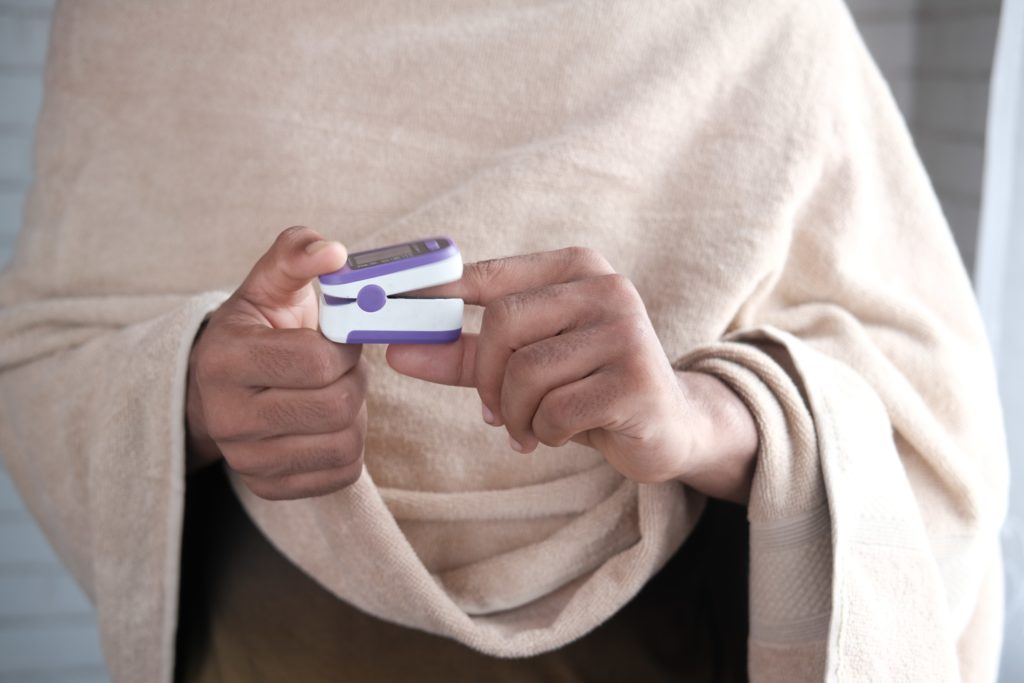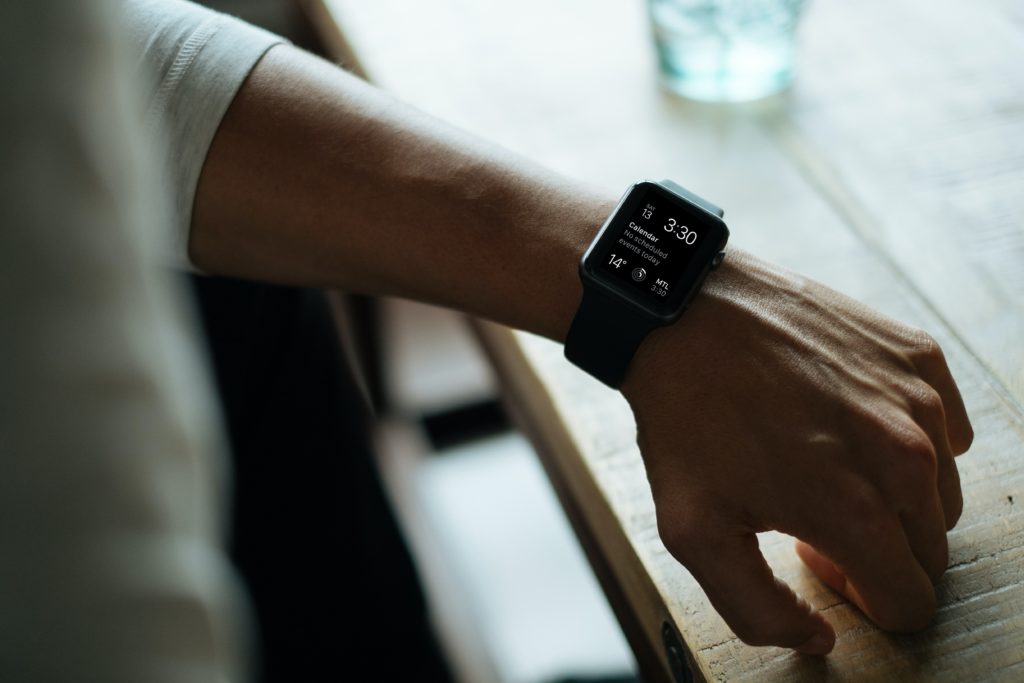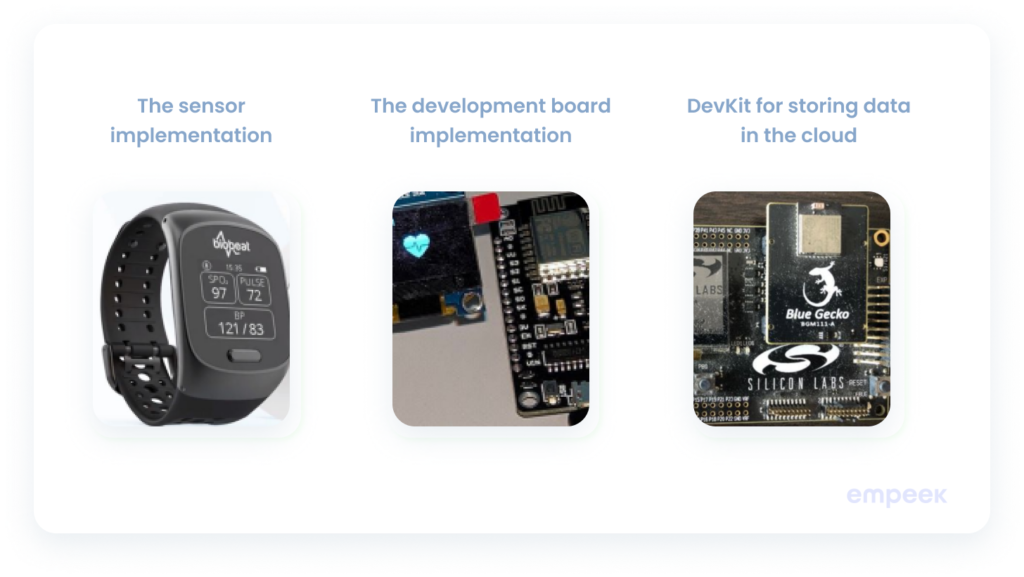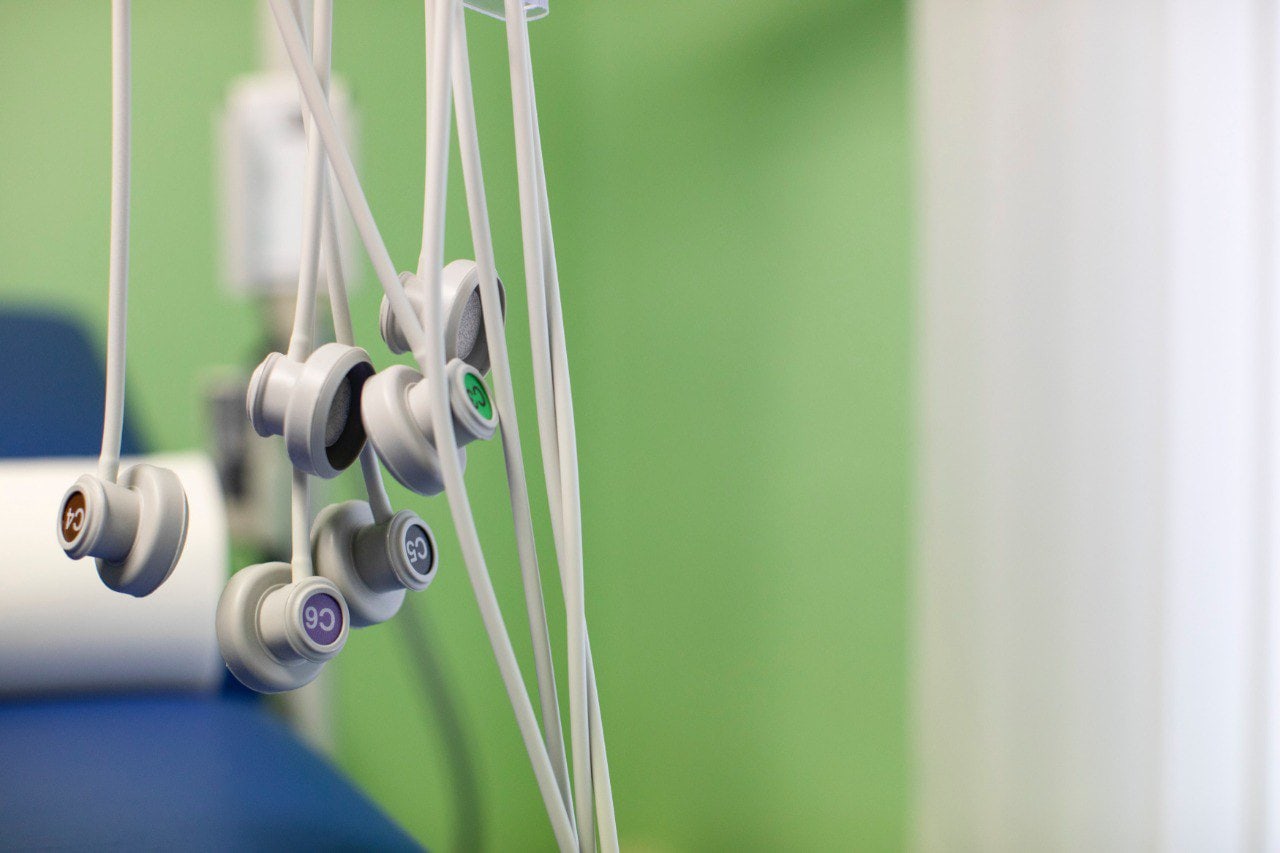The advancement of technology revolutionized the accuracy and comfort of the patient treatment process. Now we don’t need multiple wired devices and frequent spot-checks of vital signs to be fully examined by the doctor.
Imagine a medical practitioner puts a wearable device on the patient’s body, and voila, his health metrics appear on the screen. You may wonder how the data is transmitted from the device to the computer. The thing is that the platform uses several hardware detectors to get the “raw” data processed by a microcontroller. In this case study, we are going to tell you a story about vital health data monitoring with the help of photoplethysmogram measurement.
Usually, one device is used for several measurements at the same time. A good example is the photoplethysmogram health monitoring detector (PPG). It is based on a customized MAX30100-compliant sensor and provides information about blood oxygen saturation, pulse rate, and heart rate variability.

What is the MAX30100 Health Monitoring Sensor
Let’s look closer at the process of photoplethysmogram. MAX30100 sensor is an integrated pulse oximetry and heart rate monitoring solution. It combines a low-noise analog signal processing, two LEDs, a photodetector, and optimized optics. The first one allows to conduct pulse oximetry and detect heart-rate signals, which makes a remote cardiac monitoring process smooth.
The Development Kit of MAX 30100 implementation shows that the sensor is assembled like a breadboard-ready integrated circuit. Of course, it could be customized and designed in many different ways, however the current option suits wearable devices and IoT products perfectly well.
You can find the full MAX30100 datasheet here, and now we’ll focus on the essential high-level characteristics.
Health Monitoring Devices Using PPG
The early detection of patients’ cardiac health data based on PPG sensor has become of great interest among researchers and the clinical community. Depending on the area of the human body the wearable device is applied to, it is referred to one of three groups: forehead-based, earlobe-based, or wristband-based. Below you can find three types of applications using MAX 30100 sensor for photoplethysmogram measurement of vital signs.
Wearable Devices
Wearable health devices allow to сontinuosly monitor human vital signs during daily life like work, home, physical exercises, etc. The most common devices using MAX30100 sensor are blood pressure monitors, hearing aids, insulin pumps detectors, and continuous glucose monitoring devices.
Fitness Assistant Devices
Wrist-wearable devices for health monitoring using PPG MAX30100 sensor are designed to help people better monitor their health status at the fitness level for both self-health tracking and medical observation. By regularly receiving health data from fitness tracker, clinicians have better potential for earlier diagnostics and guidance of treatment.
Medical Monitoring Devices
Medical monitoring devices with MAX30100 sensor inside assist physicians in their practice on a daily basis. Defibrillators, patches, medical emergency response systems, electrocardiogram, and pulse oximetry devices provide accurate health metrics in real-time that can sometimes mean a difference between life and death.

What are the Main Characteristics?
The measured data coming from optical and thermal sensors are stored in a FIFO buffer. This data is processed by the microcontroller, and the way it is structured is available for reading from registers through the I2C interface. Of course, software algorithms are presented in a user-friendly way.
How is Data Received and Processed?
Dealing with the health monitoring system for vital signs using IoT, the whole process of receiving and processing data is pretty simple:
- Receive raw sensor data with the help of the I2C interface and standard I2C functions.
- Collect the data and convert it into a readable format. On this level, any proprietary or open-source algorithms can be used.
- Display the data. It depends on the end-user device. We can display it in a simple way, or connect it to the smartphone, store the data in the cloud, save the history, build some graphs, etc.
Here you can have a look at an image illustrating the sensor implementation:
 All in all, the process of PPG is based on controllers like MAX30100 or its clones are widely used in many devices. Despite being relatively simple, they are effective and accurate solutions for pulse oximeters, smart-watches, and fitness trackers, among many others.
All in all, the process of PPG is based on controllers like MAX30100 or its clones are widely used in many devices. Despite being relatively simple, they are effective and accurate solutions for pulse oximeters, smart-watches, and fitness trackers, among many others.
The Cost of Photoplethysmogram Health Monitoring Development
The cost of building a custom IoT solution containing MAX30100 sensor varies from $30,000 to $600,000 or higher. The sensor itself is not expensive, however, there are other factors that influence the final cost of health monitoring solution using ppg signal:
- The system’s complexity. The more complex the functionality is, the more time the implementation takes the development team.
- Technologies used. The frameworks and programming languages can be sophisticated, so the coding may take more time.
- Development team’s location. By hiring outsource development companies from Europe, you can achieve a high-quality product at a lower price.
Software technologies that can be used are React Native, .NET, and C#. React Native is for mobile applications. .NET and React Native work with web applications.
Pros and Cons of PPG Sensors
There are several advantages of PPG sensors. Especially if we compare them with ECG sensors, which diagnose abnormalities primarily of the heart itself. PPG sensors are:
- Energy-efficient. The PPG sensor battery lasts much longer.
- Easy to wear. PPG looks like a smartwatch on your wrist. ECG needs to be firmly anchored in three different places to work appropriately: wrist, heart, and ankle. So PPG sensors have only one transmission channel, ECG has three and more, depending on the model.
- Cheaper sensor. PPG won’t cost you an arm and a leg.
As for disadvantages, PPG sensors lack accuracy. They can’t show anomalies in the heart because these detectors are not fixed in that area and work on a different principle. Some PPG doesn’t discover all cardiac abnormalities with 100% accuracy.
Get in Touch
When there’s a need to develop a progressive wireless medical monitoring system for vital signs monitoring using IoT, make sure you consult a professional. Empeek has practical experience in receiving, processing, storing, and displaying data from sensors for IoT and wearable devices.
As a tech company with a strong focus on healthcare, we know how to create user-friendly software that meets the client’s demands.
You can find our portfolio here.
Want personal advice on your software development project? Contact us for a talk.
FAQs
How do PPG sensors work?
When the heart beats, the blood vessels expand and the contract based on blood volume changes. The PPG sensor produces light signals that reflect from the skin to measure weak blood flow signals.
How is a PPG signal processed?
The PPG sensor is equipped with a LED transmitter, which generates infrared light that illuminates the forehead, earlobe, or fingertip. A photosensitive diode measures the light absorbed by the body, and these measurements show changes in the blood volume.
How is the heart rate from PPG calculated?
Heart rate is calculated by counting the number of systolic peaks per minute.

![Remote Patient Monitoring Software [Case Study]](https://empeek.com/wp-content/uploads/2024/09/rpm-10-k-users.jpg)






